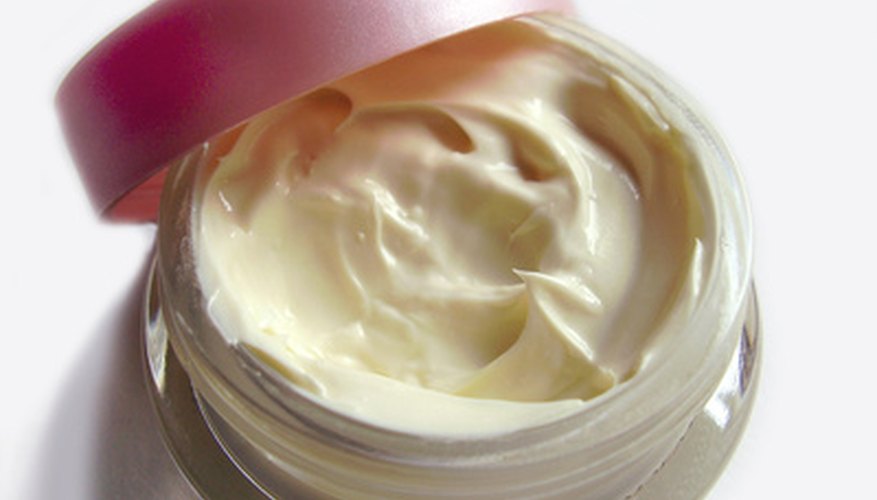Although commercial creams and ointments are widely available at a range of prices, many people prefer to make their own.
When making creams at home, there is the freedom of choosing the exact fragrance you want, and the knowledge and certainty that the formula can always be improved and repeated. Gone are the days of searching for new creams when a commercial cream is sold out, taken off the shelf or goes up in price.
- Although commercial creams and ointments are widely available at a range of prices, many people prefer to make their own.
- When making creams at home, there is the freedom of choosing the exact fragrance you want, and the knowledge and certainty that the formula can always be improved and repeated.
Mix 24.1gr. emulsifying wax, 20.7ml. olive oil, 16.6ml. almond oil, 4.14ml. apricot kernel oil, 5.95gr. beeswax and four drops of amiox in a large enamel or stainless steel jug.
Mix 18.6ml. vegetable-derived glycerine, 2.07ml. citrus seed extract and 70.1ml. of rain water or distilled water into a medium enamel or stainless steel jug.
Place the jugs in separate water-filled saucepans, ensuring the water does not overflow once the jugs are added. Place the saucepans on separate stove burners.
Slowly heat both saucepans, stirring regularly and continuously with stainless steel spatula, while monitoring the temperature with a stick thermometer. The large jug with the oil mixture should slowly reach a temperature of 70 degrees C, while the medium jug with the water mixture should slowly reach a temperature of 80 degrees C.
- vegetable-derived glycerine, 2.07ml.
- Slowly heat both saucepans, stirring regularly and continuously with stainless steel spatula, while monitoring the temperature with a stick thermometer.
Prepare a large saucepan, by filling it halfway with cold water.
Remove the jugs from the saucepans once all of the oils are melted and the ideal temperatures are reached. Now add the water mixture from the medium jug to the oil mixture in the large jug.
Stir or blend the mixture with a hand-held blender for one to two minutes. The mixture should then form an emulsion. Do not to blend any air into the mixture; pulse the blender rather than continuously blending, and ensure that the blender head is completely submerged in the mixture.
Place the jug in the large, cold water-filled saucepan to cool it down fast. Continue stirring while placing the jug in the saucepan and also while waiting for the emulsion to set.
- Prepare a large saucepan, by filling it halfway with cold water.
- Continue stirring while placing the jug in the saucepan and also while waiting for the emulsion to set.
Constantly measure the temperature of the mixture. Once a temperature of 55 degrees C is reached, add six drops of fragrance oil to the mixture if you desire.
Allow the emulsion to sit for one to two minutes, while tapping the base of the jug to remove the air bubbles.
Once the mixture reaches a temperature of 43.9 degrees C and shows signs of thickening, pour the mixture into a jar.
Allow the mixture to cool down completely before closing the jar, as any heat will cause condensation. Once completely cooled and sealed, store the jar in a cool, dry area.
WARNING
Do not leave unused cream for too long, as the shelf life will be significantly shorter than the shelf life of commercial creams. Commercial creams also have preservatives, whereas homemade creams do not. Therefore do not make large quantities, as it might not last long enough
